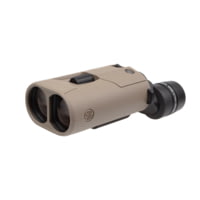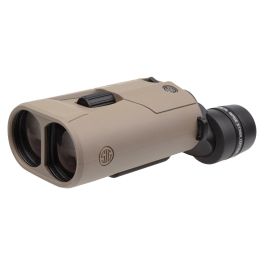All the current iterations of this Kamakura design I've seen look like they use the same S-P and rotatable rhomboid combination. In terms of light throughput that would be one of the least efficient binocular erecting systems. Other possibilities would be to use a Porro type 2 combined with a rotatable rhomboid (like the Zeiss 20x60) or simply to use a rotatable Porro Type 2 (like the Canons and some reverse Porros), which is one of the most efficient binocular erecting systems.
Ok, add the width of the obstruction between the two lenses to 37mm and that would give the baseline for stereopsis, which looks like it's around 42mm. The 10x30 appears to be about 37mm including the separation between the lenses. The only reverse Porro I have around is an old Minolta 8x23 Weathermatic. It's objective baseline with the IPD set at 65mm is 43mm.
The sliced objective lens in the 42mm models has the disadvantage of introducing some coma because the optical center of the lens is horizontally misaligned by 5mm after the lens is cut. That wouldn't be good in a high magnification telescope, but as far as I can tell from masking off the edge of a few binocular objectives it's probably not noticeable at the low magnifications of these binoculars. Still, if I tested a pair that would be the first thing I would look at.

 www.opticsplanet.com
www.opticsplanet.com









